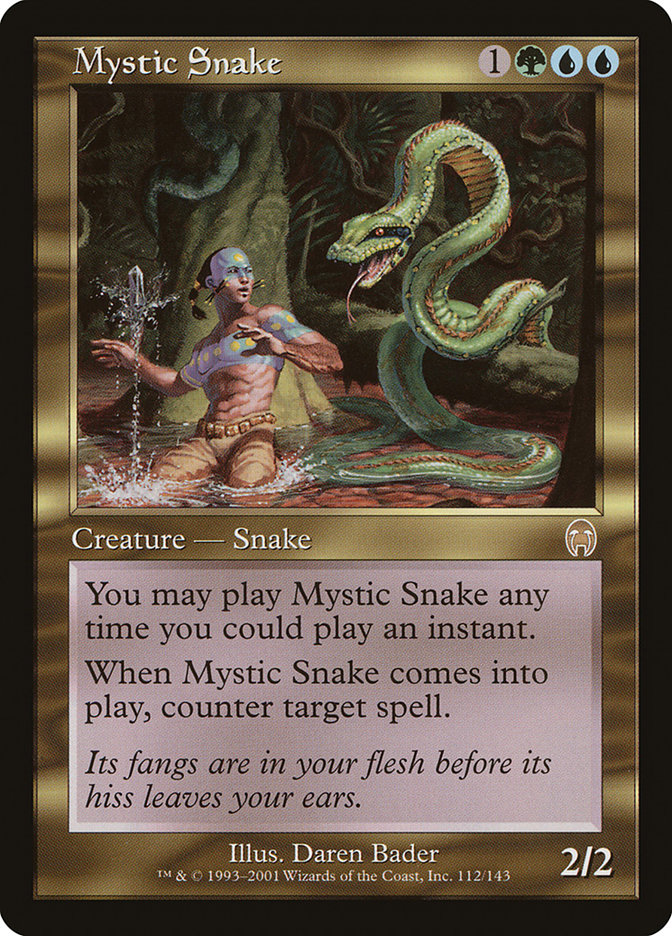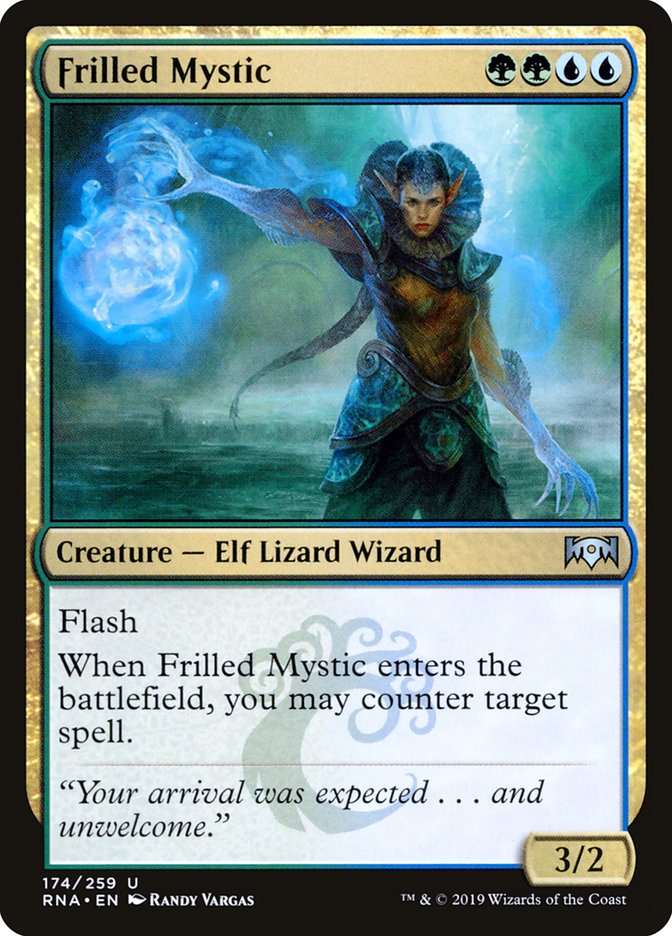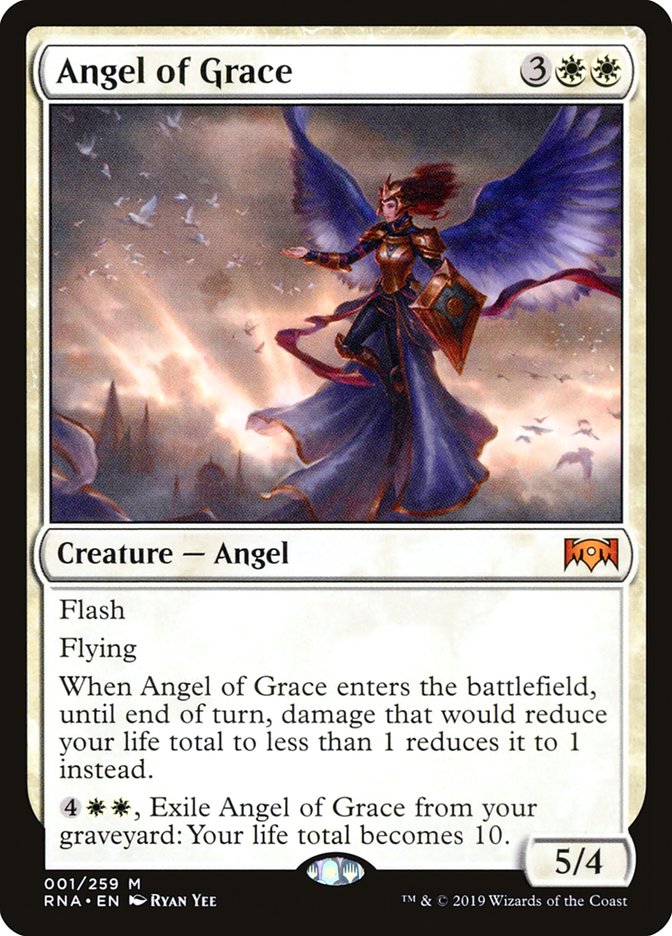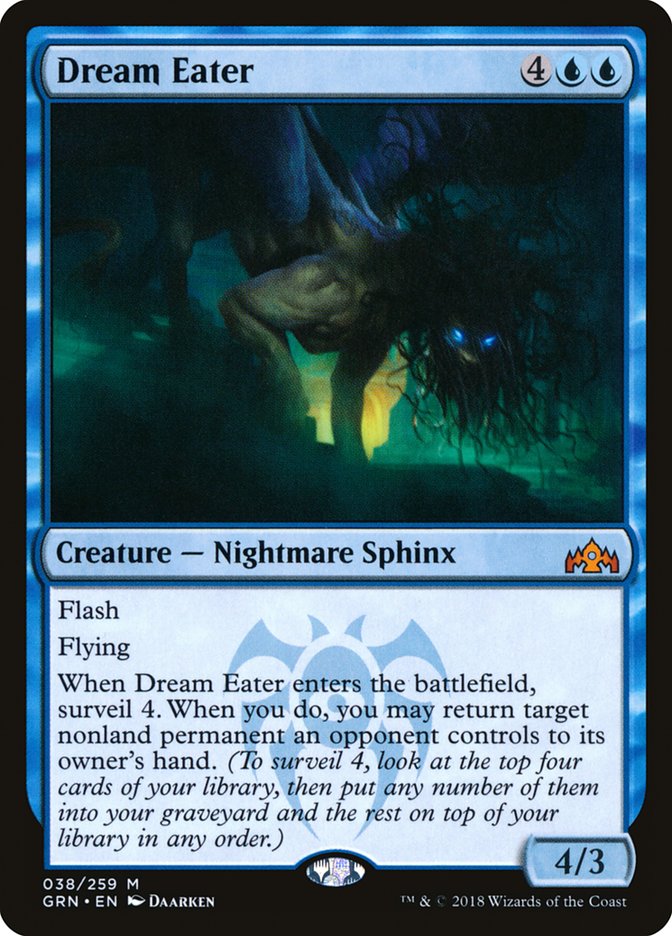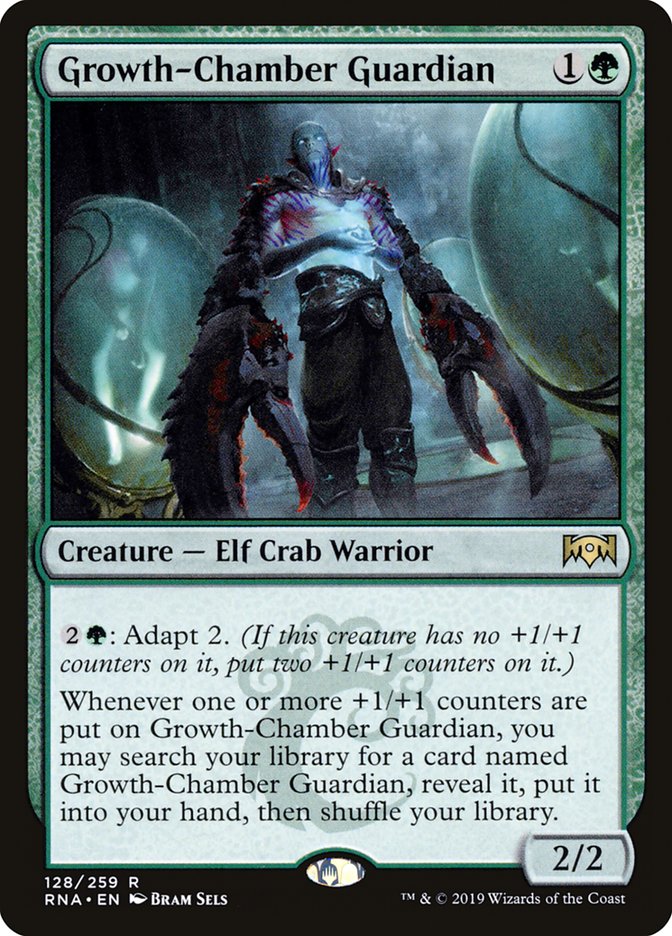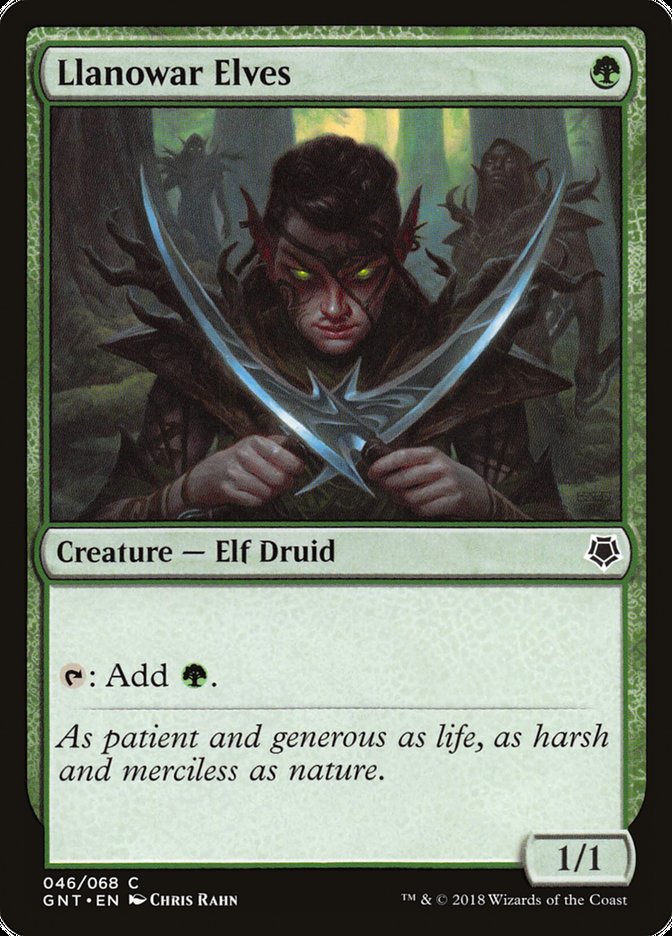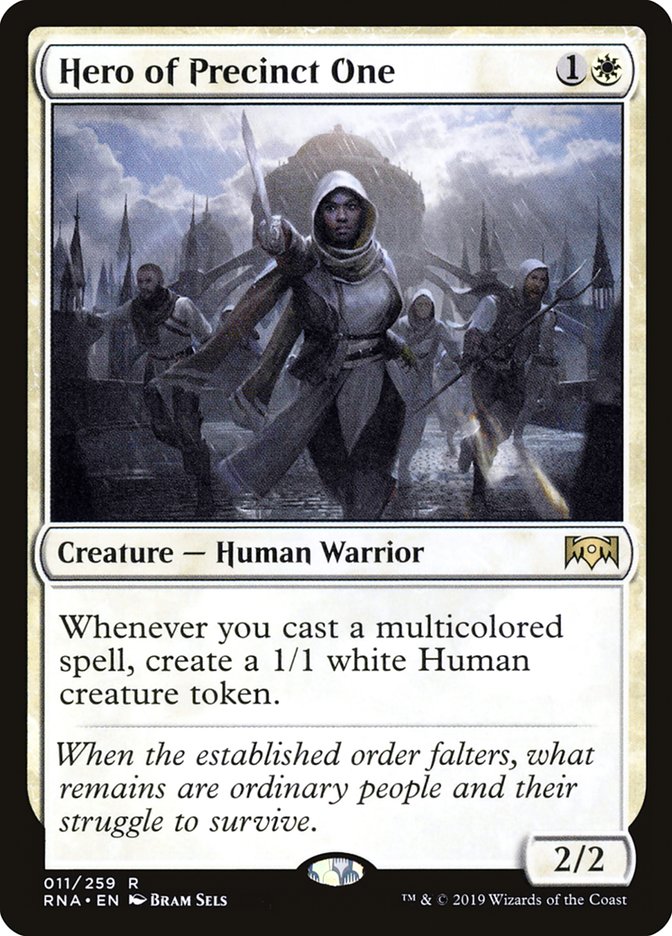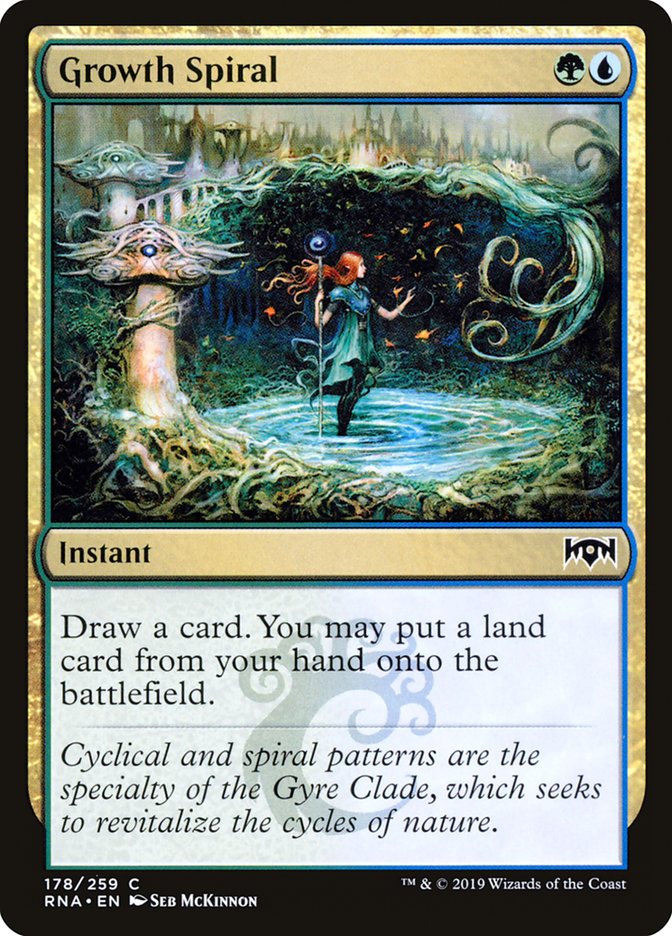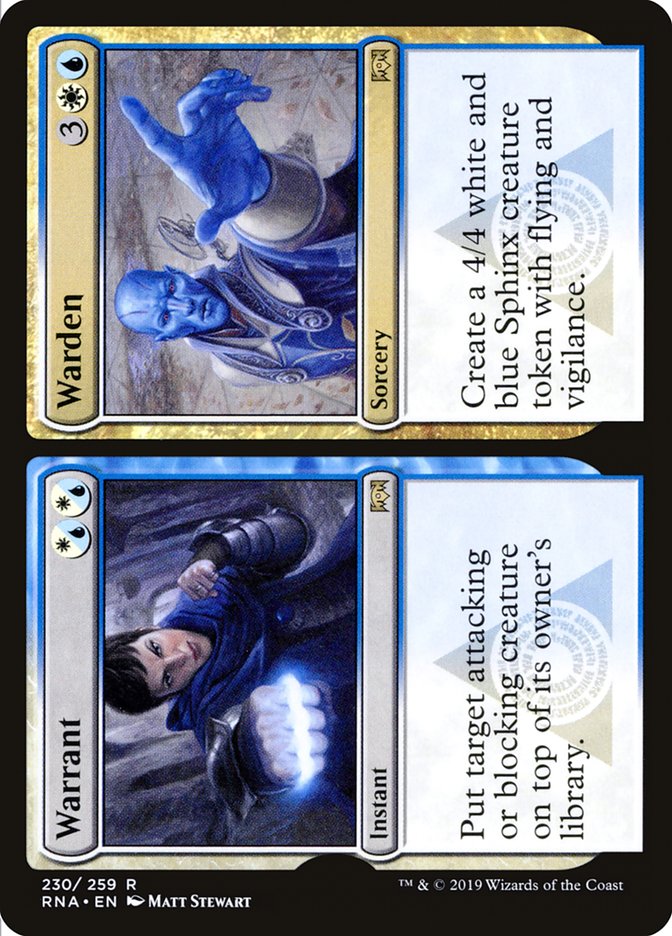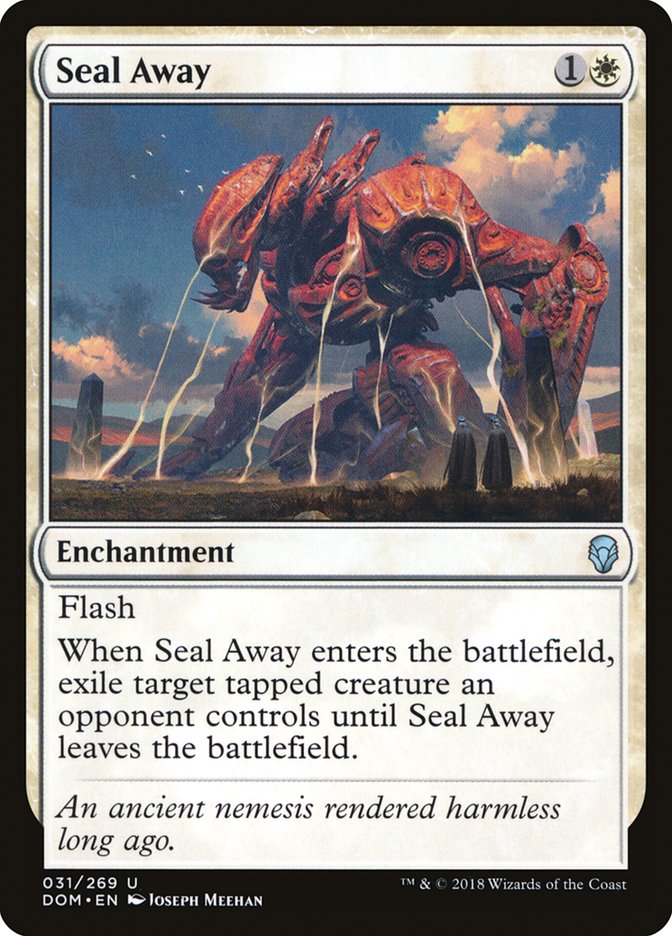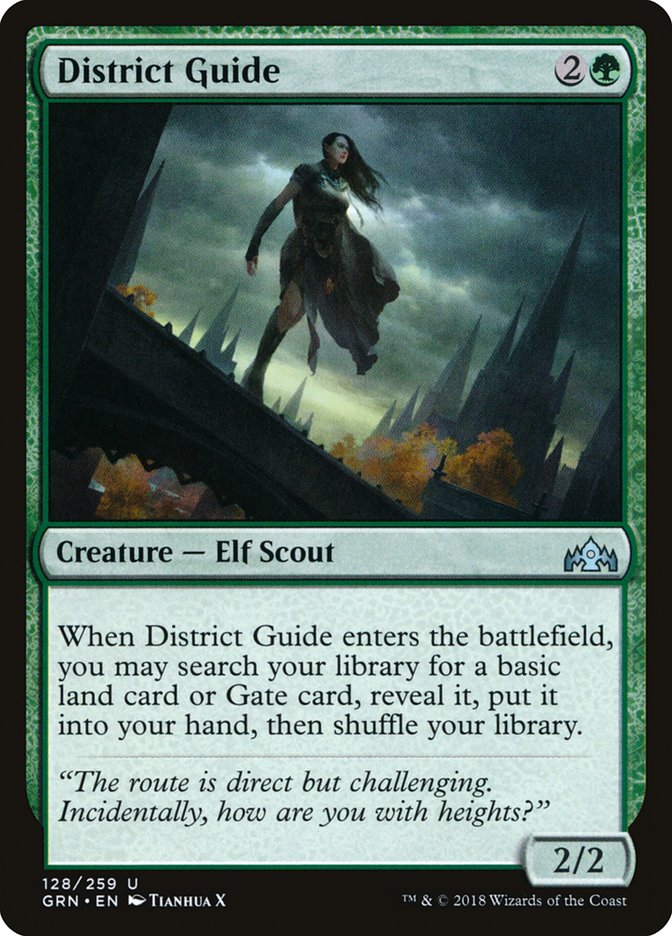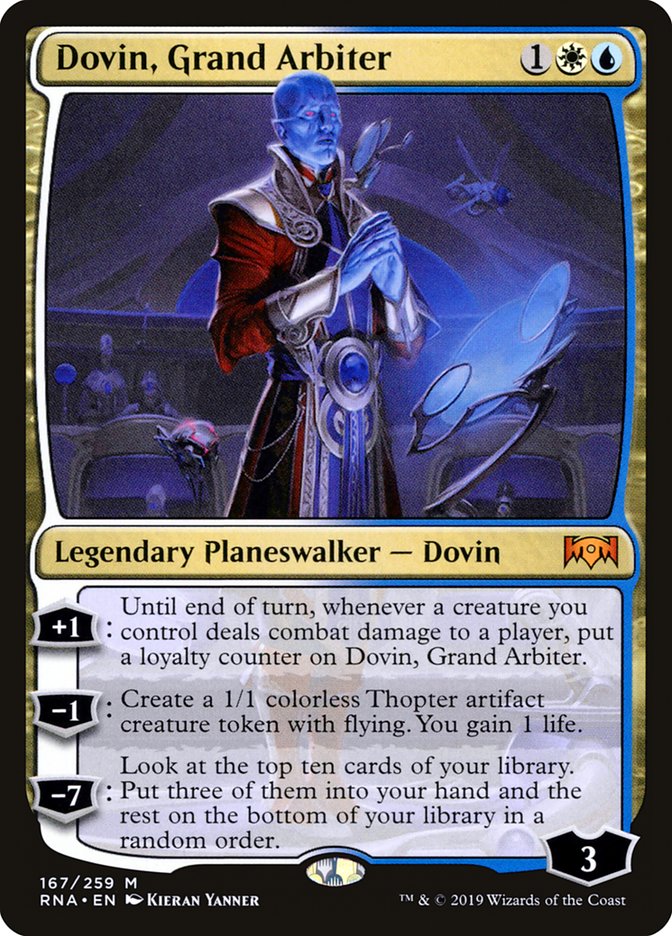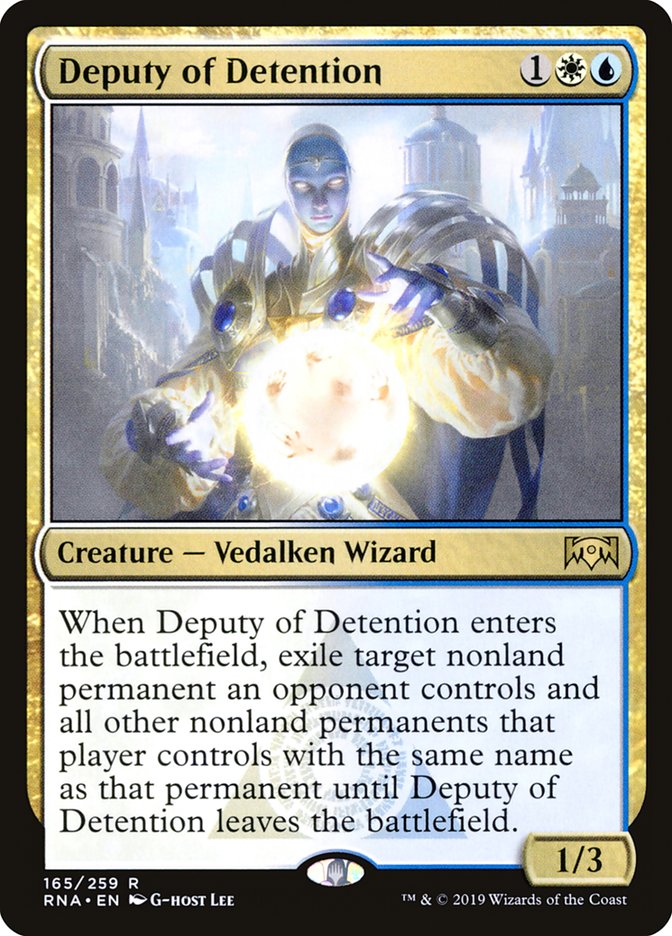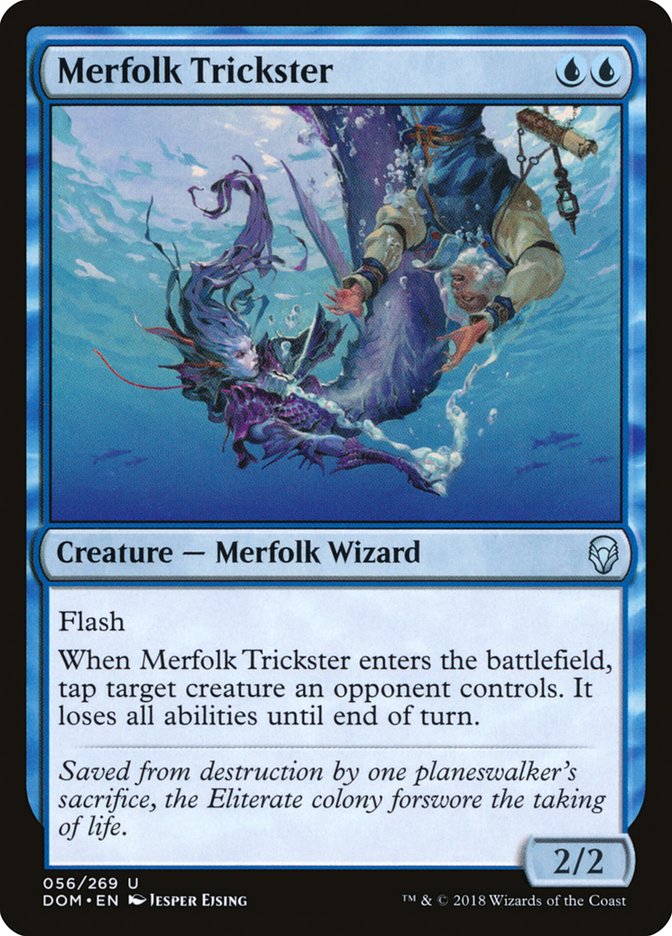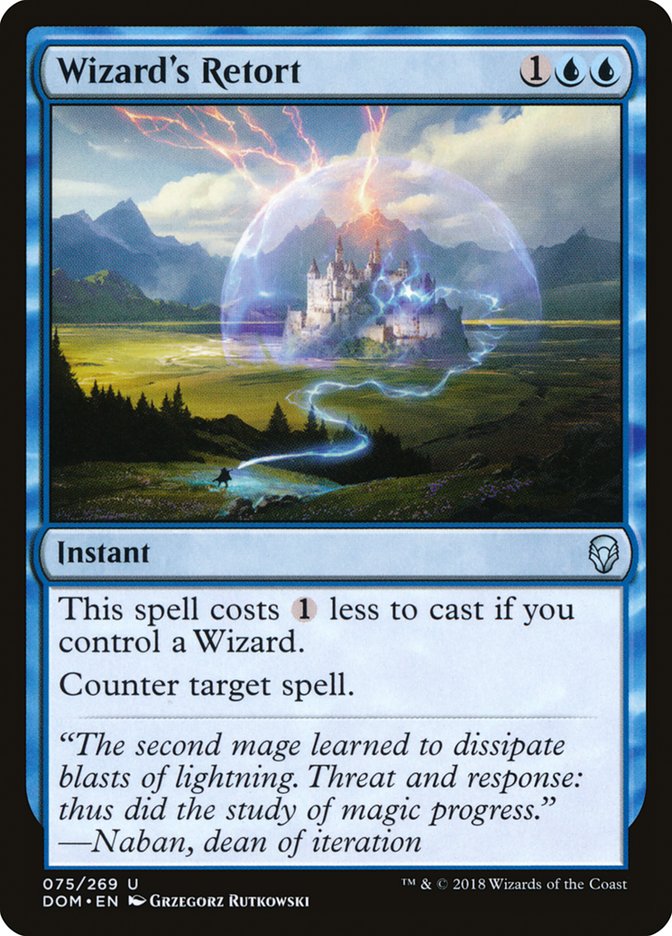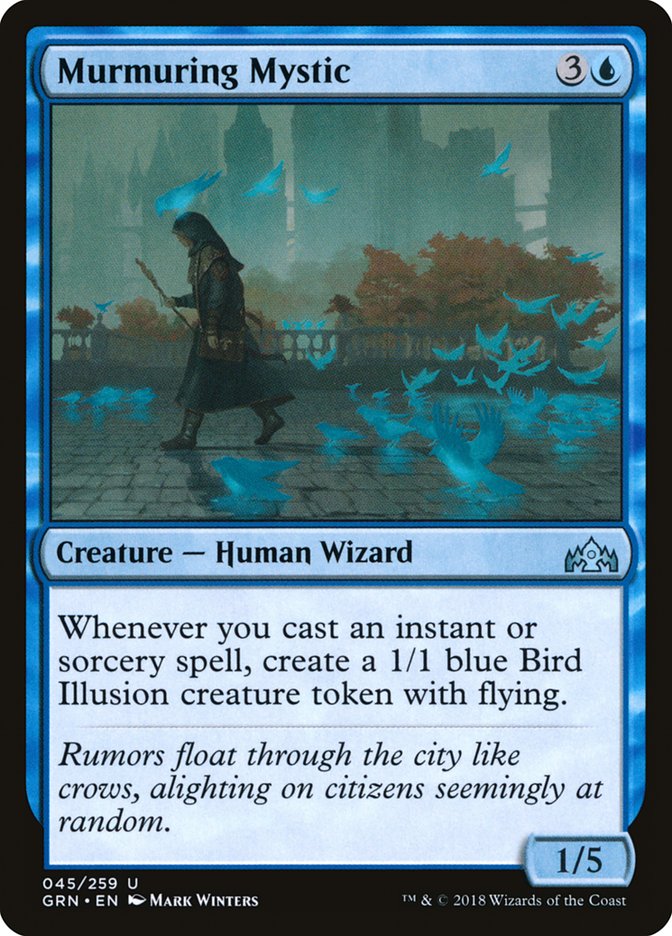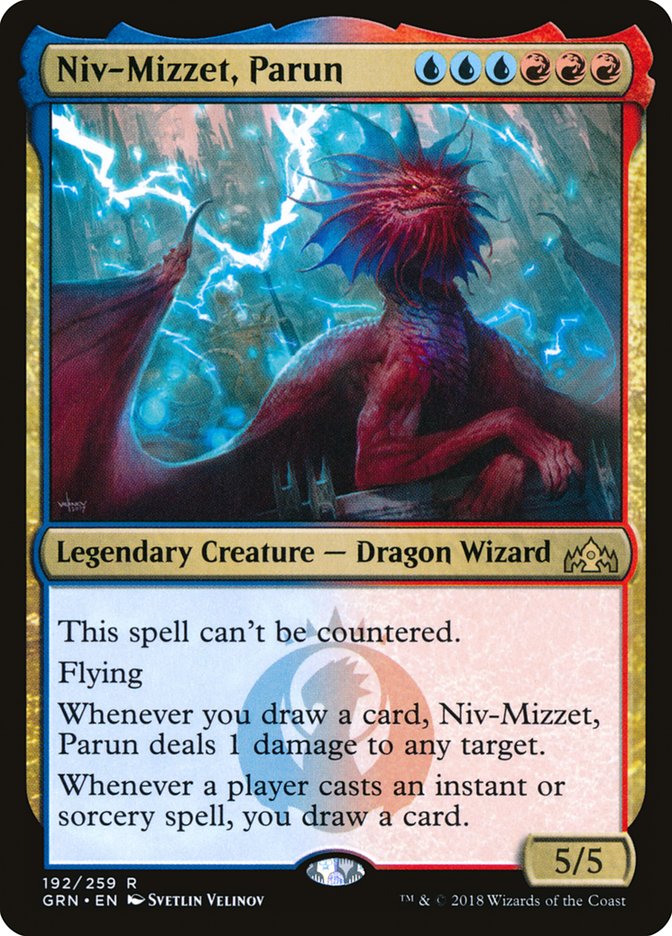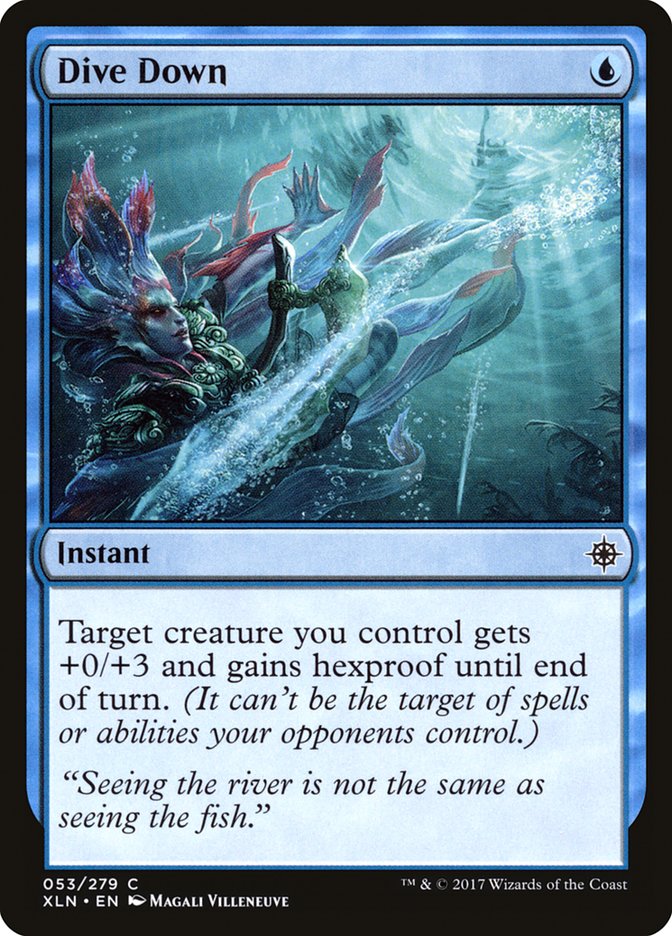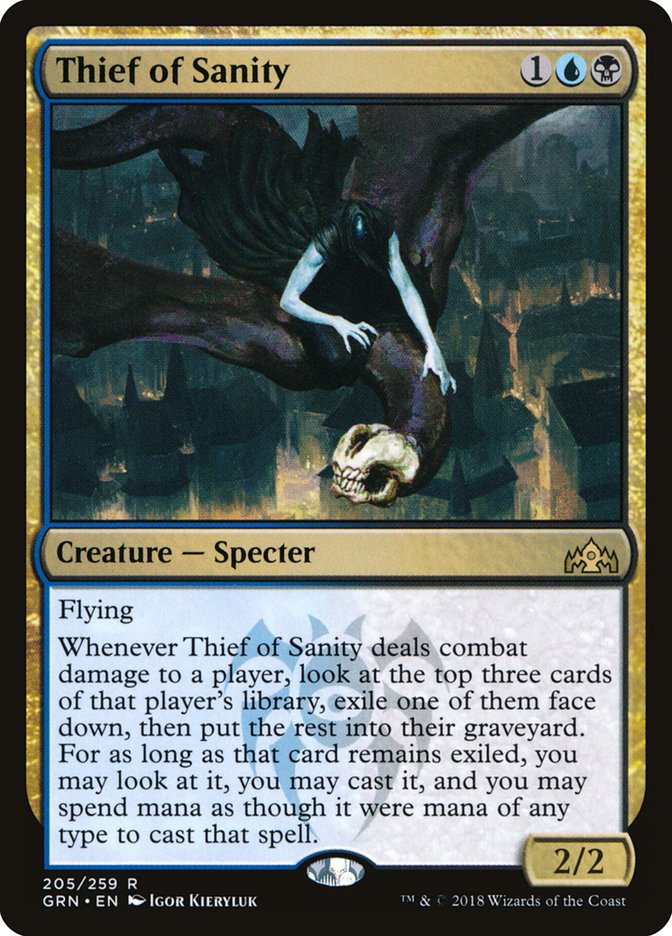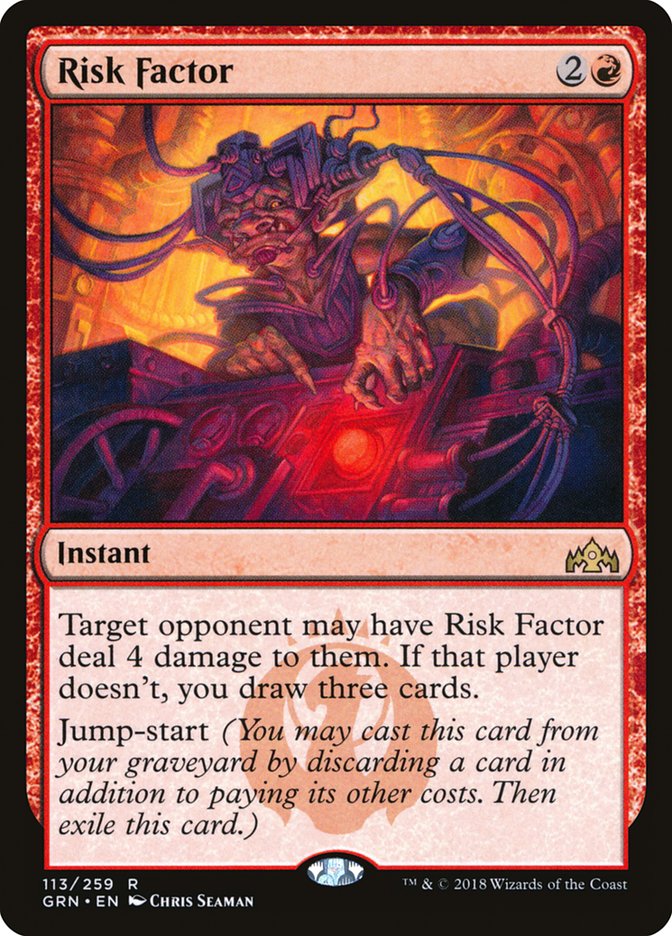My first foray into tournament Magic was during Invasion block.
Back then, Block Constructed was a supported format, and IBC was all about
the different three-color archetypes.
The first PTQ I ever did well in, I played something like this:
Creatures (18)
Lands (25)
Spells (17)

Decks like these were what taught me about tempo and velocity. At the time,
I gravitated toward control decks in Standard (like Nether Go), so this
sort of beatdown deck with controlling elements was new to me.
I fell in love.
These decks played a proactive game, which meant they were attempting to
put pressure on their opponents and force them to react. Cards like Exclude
and Mystic Snake were incredibly punishing. To top it off, you could grind
with most of the control decks in the format. A beatdown deck that had card
advantage, a plethora of reach, and some of the most powerful options in
the format? It was incredible.
Invasion
Block Constructed lead to me having a strong love for all things
aggro-control, which lead to my first individual PTQ win in Odyssey Block Constructed the next season with an aggro-control
Dimir deck. That trend continued much later with Caw-Blade, Delver, and
Jeskai Flash. You could attribute much of the success in my career to those
early days casting Mystic Snake.
When facing this sort of deck, your opponent would often be put into tight
spots. Do you run your spell into open mana, knowing full well it would
just get countered by an Exclude or Mystic Snake, or do you pass the turn,
hoping they didn’t have the Fact or Fiction or Prophetic Bolt to pull even
further ahead?
Hint: There is no right answer.
A return to this exact sort of archetype isn’t viable. However, we can
create the exact sort of squeeze that Mystic Snake and Fact or Fiction
provided thanks to a new card from Ravnica Allegiance.
The comparison to Mystic Snake is apt, even if the mana cost is more
prohibitive. We have access to stronger manabases now than during Invasion, so the mana cost is something we can work with. A third
power helps cement Frilled Mystic’s place in Standard, as any tempo deck
can make great use out of a faster clock.
Reactive cards like Frilled Mystic aren’t without downsides. Sitting back
on expensive counterspells is exploitable. Your opponent can simply pass
the turn and wait until they can cast multiple spells in one turn or they
can try to interact on your turn. If we’re going to make Frilled Mystic
viable, we absolutely need some way to punish our opponents for not playing
into us.
Of course, you could always run out your 3/2 (much like how people do with
Spell Queller) to get a clock started, but that depends on the gamestate.
You don’t necessarily need a way to punish your opponents in those spots,
but it does add an additional layer of power to the card that I’d prefer to
have.
Naturally, I went looking for things to do with unspent mana at the end of
my opponent’s turn. If your opponent doesn’t walk into Frilled Mystic, here
are some ways you can punish them:

Ideally, you’re looking for something the same mana cost as Frilled Mystic,
but we don’t have that perfect luxury. Blink of an Eye and Chemister’s
Insight are the two best options because they’re somewhat unexpected. Raff
Capashen, Ship’s Mage and Deploy both fall under that category, but are
mostly weak cards, so I’m not happy to play with them. In most instances,
running out Frilled Mystic at their end step is just as much of a punish as
casting Raff or Deploy.
The more expensive cards, like Dispersal, Angel of Grace, and Dream Eater,
are fine but not incredible. You’ll probably end up cashing in your Frilled
Mystic before you have the mana available to threaten either of those
cards. If you’re trying to build your deck to operate at instant speed,
having those cards in your deck isn’t the worst decision you could make
though.
Similarly, Growth Spiral should hardly even be considered a punish, but it
does give you something to do with your unspent mana, even if the effect is
marginal. Given the gameplan inherent in a deck with Frilled Mystic, Growth
Spiral will likely be present in a lot of the same decks.
Cards like Growth-Chamber Guardian and Arguel’s Blood Fast push your
opponent to act, which will likely end up in your favor. Cards like
Treasure Map and Search for Azcanta can also put the squeeze on your
opponent, forcing them act before they take over the game.
There are some backdoor ways to punish your opponents too. By not playing
into Frilled Mystic, they’re actively choosing to make the game go longer
hoping to find a better spot. If you play some powerful cards on the top
end, that can punish their decision as well.
Of these options, one was consistently a focal point of my decklists,
almost as much as Frilled Mystic itself.
Andrew Elenbogen went deeper on Growth-Chamber Guardian in his
article
this week, but suffice it to say that he is completely right. I was
initially lukewarm on it, but now I think it’s one of the best cards in the
set. A Grizzly Bears isn’t exciting anyone, but a never-ending mana sink is
exactly what many Standard decks want.
Being able to adapt at instant speed plays well with Frilled Mystic. If the
game dictates it, you can adapt main phase and get your clock going.
Meanwhile, Growth-Chamber Guardian is also drawing you extra cards.
While Growth-Chamber Guardian and Frilled Mystic are a match made in
heaven, how you build your decks diverge quite a bit from there.
The branching paths are basically:
[/card]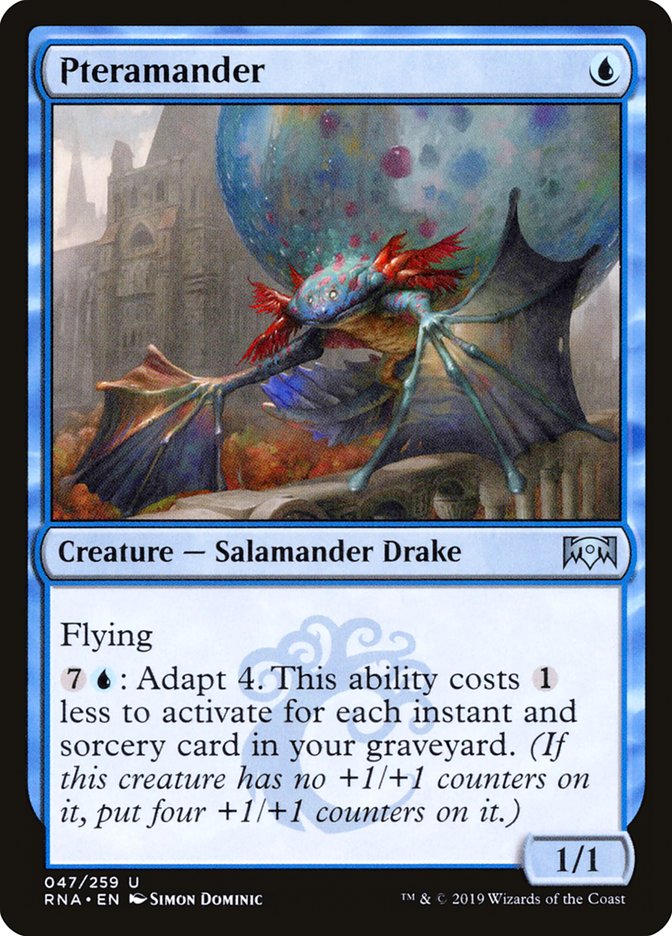
Either you want to use Llanowar Elves for a quick mana boost, focusing more
on aggression than lategame staying power, Pteramander for a Delver of
Secrets-like tempo game, Hero of Precinct One for going wide, or Wizard’s
Retort with a larger Wizard subtheme. There’s another option of just
operating as a powerful, good stuff deck (which typically contains Growth
Spiral), but I can’t help but feel the lower to the ground versions are
inherently stronger.
Keep in mind that some of my proposed decklists are going to be stronger
than others, but it’s important to explore our options and see what’s
possible.
Creatures (13)
Planeswalkers (4)
Lands (25)
Spells (18)

Twelve shocklands might be a lot, but we often played that many in Return to Ravnica Standard, although sometimes I shaved to ten or
eleven depending on how aggressive the metagame was. Realistically though,
if the metagame is aggressive, what you want is to ensure your mana enters
the battlefield untapped.
One of the more common tensions of building manabases in this new format is
going to be how many checklands you play alongside your shocklands and
basics. The above deck has seventeen enablers for checklands and only eight
checklands themselves, which is an excellent ratio for functionality. I
could see moving in the other direction and axing the basic Island
altogether for another checkland. I really want to keep the twelve sources
that can cast Llanowar Elves on Turn 1 though.
I’m breaking some of my own rules here. I typically don’t want Llanowar
Elves and Growth Spiral in the same deck. One of them wants you to use your
mana each turn to get a tempo advantage and the other is more of a slower,
incremental advantage card, meant to have you playing a longer game.
Llanowar Elves encourages you cutting lands while Growth Spiral wants you
to add some. Growth Spiral is even at odds with Growth-Chamber Guardian.
Similarly, I don’t really want Llanowar Elves and Opt in the same deck.
Ideally, your Llanowar Elves deck will be using its mana for every turn,
tapping out for threats. With a good draw, you can expect to cast Opt by
Turn 4 or so, which really isn’t a good use of the card. Having Opt and
Llanowar Elves does give you more Turn-1 plays, which is obviously a good
thing, though.
So, here I am, building a deck with Llanowar Elves, Growth Spiral, and Opt,
wondering how this even makes sense. Honestly, maybe it doesn’t. My logic
is that I want to cast Teferi on Turn 4 most games and having redundancy
helps me do that. Despite that, I could easily see cutting Llanowar Elves
from this deck entirely (and adjusting the manabase) and the deck might be
even better.
Warrant is incredible. As a defensive tool, it will often be as invaluable
as Seal Away, except that it can also be used aggressively. Should your
opponent not present anything noteworthy, you can make use of the Serra
Angel mode.
The real question is how much worse (if at all) is putting something on top
of its owner library as opposed to removing it with Seal Away? Instant
instead of enchantment has some bonuses, like living in your graveyard
instead of on the battlefield waiting to be destroyed or fueling your
Pteramander. It’s multicolored for Hero of Precinct One. It also forces
your opponent to skip their draw step in order to redraw that creature, and
that’s the best part.
You’re not trying to remove each threat your opponent plays. All you need
to do is create favorable trades mana-wise and leverage that somehow,
either by turning the corner and clocking your opponent or by giving
yourself a window to resolve a haymaker like Teferi. Should your opponent
already be in a rough spot, denying them a fresh draw step is only going to
further cement your advantage.
I don’t like Quench. It goes dead too quickly and isn’t that much of an
upgrade to Syncopate most of the time. That could change if my decks were
more aggressive, but for the most part, I’m building these decks with the
capability of playing longer, grindier games as well. Spell Pierce or Dive
Down are cards that I’ve happily had in and out of my decks because they
will almost always trade up in mana, so those seem better to me than Quench
with all its downsides. If I want versatility, it’s probably because I
expect the games to go longer, at which point Syncopate makes sense over
Quench.
Let’s go in a different direction.
Creatures (17)
Planeswalkers (6)
Lands (24)
Spells (13)

District Guide makes more sense to me in a Llanowar Elves build of the deck
than Growth Spiral. You get to shave on lands because of Llanowar Elves,
yet still ensure you get to five mana for Teferi. I could probably use
another two-drop here because the deck looks clunky if you don’t have
Llanowar Elves on Turn 1. I could see having a third Syncopate over the
third Chart a Course, even if Chart a Course is awesome with Dovin, Grand
Arbiter.
Because of Llanowar Elves, this deck is attempting to utilize Dovin as a
bridge between the early game and casting Teferi. Deputy of Detention also
helps fill that role, which necessitates some copies of Dive Down to
protect it. Despite being a narrow card, Dive Down will basically also
trade up in mana, so it’s worth considering for any deck that cares about
having a battlefield presence.
Dive Down could be Spell Pierce since they’re typically doing the same job
except Spell Pierce is a tad more versatile. However, Dive Down scales
better into the long game than Spell Pierce does (not unlike what I said
about Quench), so it might be more important to have a card that can always
protect Deputy of Detention.
What about Wizard’s Retort?
Creatures (14)
Planeswalkers (3)
Lands (25)
Spells (18)

In a move that should surprise no one, I’ve opted to forgo Llanowar Elves
in the Merfolk Trickster Wizard’s Retort deck.
One of the coolest ways you can punish opponents is by casting Frilled
Mystic, casting Teferi, Hero of Dominaria, and untapping two lands in order
to have Wizard’s Retort at the ready. They are damned if they do and damned
if they don’t.
Another interesting take is using Murmuring Mystic as a Wizard, but I have
no idea how to utilize that card alongside Frilled Mystic. Murmuring Mystic
might just need its own deck. Deputy of Detention is also a Wizard and
could find a spot in these decklists, but it takes away from the “flash”
aspect. Let’s not forget Unclaimed Territory is a thing either, even if it
doesn’t work with the Wizard support spells.
Here is the first of many Hero of Precinct One decks that I’m going to
build.
Creatures (16)
Planeswalkers (6)
Lands (24)

Here, our beloved Growth-Chamber Guardian leaves us. Instead, we have Hero
of Precinct One providing the backbone of the deck.
You could try using both together, but that seems difficult given that they
don’t work well together. Instead, I have an odd assortment of the various
split cards, some multicolored creatures, and some multicolored
planeswalkers. I went pretty deep trying to make Hero of Precinct One as
powerful as possible, but we probably don’t need to make a Human token with
every spell we play.
For Bant, I have one more idea.
Creatures (11)
Lands (24)
Spells (25)

Okay, so this isn’t entirely a Bant deck, but it does go to show that you
can splash off-color hybrids rather easily.
Unlike Squadron Hawk, there’s no rule that says you need to play four
copies of Growth-Chamber Guardian. Yes, you generally want a copy on Turn
2, but not always. If you’re trying to fit a Salamander Drake into your
deck, having more instants and sorceries in your deck might be more
valuable.
Pteramander is an incredible card that I’m shocked isn’t rare. Both it and
Frilled Mystic want some overlap between cheap cantrips and answers, but
honestly, Pteramander might be a stronger pairing with Arclight Phoenix
than anything else.
Deeproot Champion is another potential option for decks like these, but it
still seems worse than Growth-Chamber Guardian, which should speak to how
strong the Guardian is.
Let’s finally get back to my roots and look at what Temur has to offer.
Creatures (10)
Lands (26)
Spells (24)

As I mentioned earlier, one of the odd ways to punish opponents for not
walking into Frilled Mystic is that it gives you more time to set up
Niv-Mizzet, Parun plus Dive Down.
The first place I started was the Wizard sub-theme because Unclaimed
Territory is an adorable tri-land. Realistically though, we can do better
than Merfolk Trickster. Unfortunately, Llanowar Elves and Niv don’t play
well together, so we don’t even have that option.
Let’s try it again, this time without the Wizard nonsense.
Creatures (10)
Lands (26)
Spells (24)

This seems stronger on basically every metric.
The one thing Temur is lacking is something powerful to do in the midgame.
Most Niv decks have started using Treasure Map to help with that and that’s
something we could easily adopt here if we wanted to. Chemister’s Insight,
Precognitive Perception, and Ral, Izzet Viceroy are other reasonable
options.
Overall, I like this take a lot.
Creatures (22)
- 4 Llanowar Elves
- 2 Hostage Taker
- 2 District Guide
- 2 Doom Whisperer
- 4 Thief of Sanity
- 4 Growth-Chamber Guardian
- 4 Frilled Mystic
Lands (24)
Spells (14)

I’m borrowing heavily from the deck that Mark Jacobson played at Pro Tour Guilds of Ravnica.
Having all the shocklands means we get to build some wild Llanowar Elves
decks, including those that try to play Thief of Sanity on Turn 2. That
sequence is sort of Magical Christmas Land because you need a green
shockland into another land that’s not a basic Forest, but it’s doable.
Untapping with Thief of Sanity will usually be game over unless you’re
getting completely run over, but Frilled Mystic amplifies that by a lot. It
goes from “probably game over” to “they have zero outs on Turn 3 or 4.”
This deck lacks the lategame staying power of many of the versions and
doesn’t necessarily have the explosive starts the Pteramander versions do,
so I’m hesitant to say this will actually be a deck, though.
Drill Bit seems like a better option than Thought Erasure in this deck that
can consistently enable spectacle. It’s not Thoughtseize, but it is a cheap
disruptive element that’s worth trying.
Even though this deck is mostly creatures (and therefore sorcery speed),
Frilled Mystic is still a strong inclusion. You also have some of the best
Dive Downs possible considering how impactful Thief of Sanity, Hostage
Taker, and Doom Whisperer are.
There’s also one other secret punish you can utilize alongside Frilled
Mystic.
Hopefully you can be applying pressure at the earlier stages of the game
because otherwise Risk Factor looks kind of awkward in those scenarios.
Still, at eight damage total per Risk Factor, your opponent should be
softened up to the point where any mediocre beatdown will finish them. Even
if that doesn’t work, the second copy of Risk Factor should turn into a
nice burst of cards.
Creatures (11)
Lands (24)
Spells (25)

Surprisingly, there aren’t many sources of chip damage in this Standard
format. Ionize clearly fits that description, but it drops off quickly.
Each point of damage you can do to your opponent makes Risk Factor even
more deadly, as the choices get more and more difficult for your opponent.
I’ll need to get some games in to know for sure, but it’s possible
Pteramander is lackluster in this sort of deck. You have a bunch of spells
and many of them cantrip, but your graveyard might not be filling up fast
enough. I wouldn’t be surprised if we also needed something like Discovery
to actually make Pteramander excellent. That said, it’s a cheap enabler for
Chart a Course, and adapt works well with Frilled Mystic, plus the chip
damage from a one-mana evasion creature adds up with the Risk Factors in
the deck.
This might not be the optimal build, but I am very excited by the
interaction between Frilled Mystic and Risk Factor. It is, by far, the
shell I think has the most potential.
Conclusion
There’s much to unpack here. Llanowar Elves, Risk Factor, Teferi, and
Niv-Mizzet each have their own sets of pros and cons. However, the duo of
Growth-Chamber Guardian and Frilled Mystic will be present in nearly every
version of these tempo decks. If I were playing in a tournament the first
week of Ravnica Allegiance, I would certainly be exploring
something with Frilled Mystic.
Red and white both offer excellent tools. Black, on the other hand, I’m not
too sure of. Having some extra reach in the form of burn spells gives red
the edge overall, but white offers more control tools, some cool tempo
tools, and plenty of ways to play longer games. Black is… spot removal and
threats? We can get those in any color!
For those of you who haven’t had the pleasure of casting Mystic Snake
before, I’m excited for you. You may never want to go back to playing a
non-tempo deck ever again.


